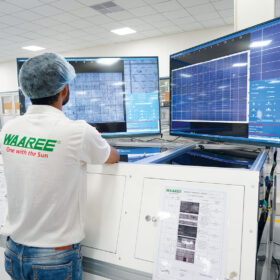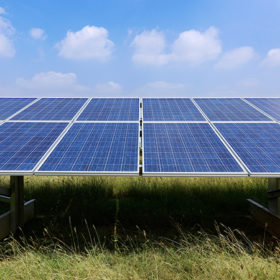As the world moves toward clean energy, Engineering, Procurement, and Construction (EPC) companies are central to this change. Emerging markets, in particular, give firms unique chances to shape the future of sustainable infrastructure.
With green hydrogen and renewable energy leading the way, EPC companies are now more than just builders. They enable new business models, boost economic growth, and play a major role in creating a low-carbon future. Global frameworks like the Paris Agreement continue to shape national-level clean energy goals, reinforcing the role of infrastructure providers in decarbonization pathways.
The global shift to clean energy is providing great opportunities for these companies, especially in emerging markets where building infrastructure is crucial for economic growth. Green hydrogen and renewable energy projects are at the center of this change, allowing firms to create not only infrastructure but also new business models and sustainable revenue sources.
Driving force in hydrogen development
EPC companies are uniquely positioned to drive the development of hydrogen value chains. Their expertise is essential for designing and building the full range of infrastructure, from electrolyzer plants to storage facilities, transport networks, and refueling stations. They can significantly improve energy use, grid stability, and local industries in areas with limited infrastructure by offering scalable, modular solutions that reduce initial and ongoing operational costs, connecting hydrogen production with renewable energy sources.
India’s National Green Hydrogen Mission, launched in 2023, aims to increase production, infrastructure, and exports. It supports large-scale green hydrogen projects in sectors such as fertilizers, refining, and heavy industry.
EPC companies can leverage renewable resources and growing industrial demand to create attractive solutions for investors and buyers. Hybrid projects that combine hydrogen production with other renewable outputs can generate new revenue opportunities and promote economic growth. India’s renewable energy goal of 500 GW by 2030 supports these efforts by allowing hydrogen production to be located alongside plentiful renewable sources.
EPC companies with strong in-house technology centers, modular design skills, and global relationships are increasingly offering complete solutions for the green hydrogen value chain. They offer a variety of solutions, including balance-of-stack systems, hydrogen purification units, and fueling stations, along with green ammonia, green methanol, and compressed biogas. These companies support the shift to sustainable energy by building scalable and affordable infrastructure. They also focus on reducing carbon emissions in key industries like steel, chemicals, and fertilizers. Additionally, they are embracing new digital technologies to improve engineering and project management processes. They are using hybrid solutions such as biofuels and power-to-liquid technologies.
Financing strategies for clean energy development
Emerging markets encounter significant obstacles in the production of green hydrogen, primarily due to elevated costs and limited access to funding. It is crucial for firms to establish strong financial structures to ensure the success of their projects.
A viable approach to bridging the financing gap involves the combination of loans from international development institutions with private sector investments and risk-sharing models, such as firms acquiring equity stakes.
According to the International Energy Agency, the cost of green hydrogen is expected to fall significantly by 2030, driven by policy support and falling renewable energy costs making financing more attractive to institutional and private investors alike.
Standardization is crucial for green hydrogen initiatives, as it reduces costs and project delays by creating modular, pre-certified designs for electrolyzers and plant components. This strategy accelerates deployment, minimizes operational and technical risks, and increases the project’s appeal to investors.
Opportunities and strategic approaches
Firms encounter distinct opportunities and challenges in various markets. Renewable energy regions may help lower green hydrogen prices. Meanwhile, experts from the traditional energy sector are developing transitional solutions, such as carbon capture technologies. In markets with high industrial demand, the focus often shifts to hydrogen solutions close to end users. Small-scale, modular electrolyzers can cut transmission infrastructure costs while supporting heavy industry and mining operations.
Managing project risks
Clean energy projects come with a unique set of risks, particularly those involving new technologies like Green Hydrogen. One effective strategy that companies can adopt to mitigate these risks is to expand their technology partnerships. They can also collaborate with leading equipment suppliers through contractual agreements that provide incentives for achieving performance benchmarks.
Another effective means of risk mitigation is phased commissioning, bringing projects online in stages as revenue and operational performance are validated. Companies can improve capital and operating expenditures by using digital twins to simulate plant operations.
The clean energy transition presents an opportunity for firms to reshape their global role by integrating their infrastructure knowledge with new financial and project delivery models. This approach involves developing sustainable, scalable solutions for hydrogen and green infrastructure, promoting economic growth and accelerating global decarbonization. Companies that adopt this approach will guide the industry towards a cleaner future.
The views and opinions expressed in this article are the author’s own, and do not necessarily reflect those held by pv magazine.
This content is protected by copyright and may not be reused. If you want to cooperate with us and would like to reuse some of our content, please contact: editors@pv-magazine.com.








By submitting this form you agree to pv magazine using your data for the purposes of publishing your comment.
Your personal data will only be disclosed or otherwise transmitted to third parties for the purposes of spam filtering or if this is necessary for technical maintenance of the website. Any other transfer to third parties will not take place unless this is justified on the basis of applicable data protection regulations or if pv magazine is legally obliged to do so.
You may revoke this consent at any time with effect for the future, in which case your personal data will be deleted immediately. Otherwise, your data will be deleted if pv magazine has processed your request or the purpose of data storage is fulfilled.
Further information on data privacy can be found in our Data Protection Policy.